I’m Dreaming of a White (Sands) Christmas
Growing up in Texas, spending my early 20s in Arkansas and Spain, and then moving to the Sonoran Desert, I’ve rarely gotten to enjoy a cozy Christmas with snow on the ground. I have many memories as a kid of running around the house on Christmas Day in shorts and a T-shirt! But last December, on a cross-country road trip from Phoenix to Dallas, I got that full White Christmas experience at White Sands National Park in southern New Mexico.
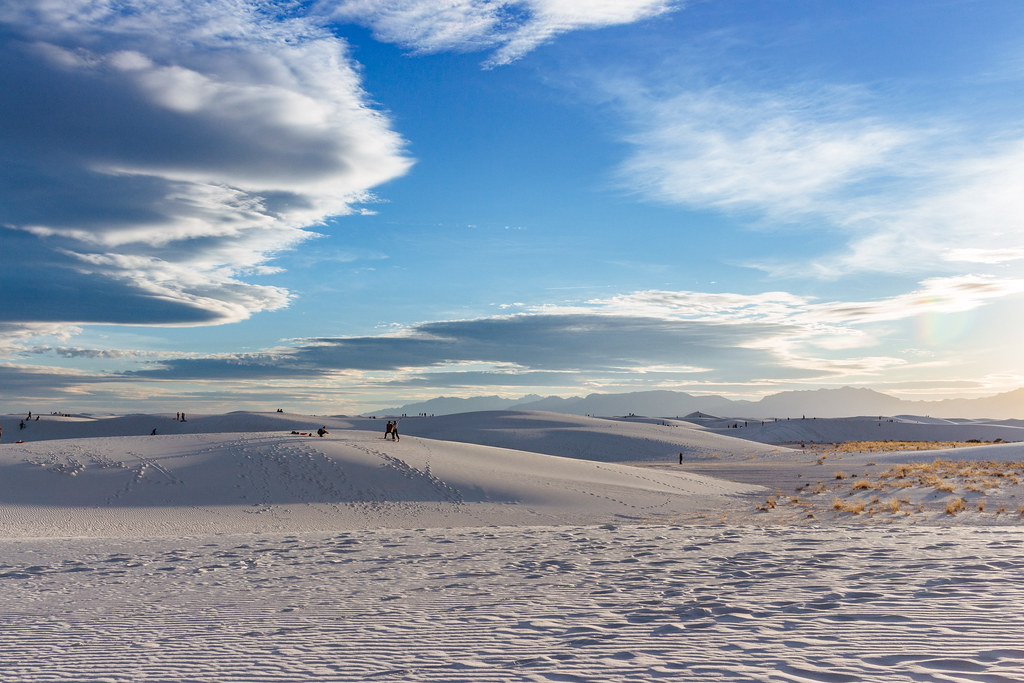 |
| White Sands National Park |
It was my first time seeing my parents and family in two years due to the pandemic and having adopted a reactive shelter dog. My partner stayed home with the dog while I drove the 16 hours from Arizona to Texas to avoid flying during the surge of the omicron variant. But because the scenery in the low deserts and Great Plains is rather uninspiring, I broke up this long, long drive by stopping at two parks featuring sand dunes, including White Sands, the world’s largest gypsum dunefield.
A magical place in the Chihuahuan desert
The promise of a national park kept me going all day long as I left the Phoenix metro area and passed through national forests, open-pit copper mines next to neatly stacked tailings, Tribal lands, cotton fields, and cattle grazing ranges. Saguaro and cholla cactus gave way to yucca and grasses the closer I got to New Mexico, a signal I was almost to White Sands.
 |
| Rabbitbrush |
Once I got to Las Cruces, a quick drive over a mountain pass took me directly to the park entrance. It was pure joy when I first glimpsed the striking, bright dunes mixing with brown grass in the dead of winter. After driving an entire day through rather bland landscapes, I welcomed this exciting change of pace.
I knew it wasn’t snow this far south, but the brilliant white sands turned this patch of the Chihuahuan Desert into a winter wonderland.
I was left with barely an hour on my hands before sunset after buying a few bags of New Mexico-only Piñon Coffee from the gift shop to bring home as souvenirs. But this final hour of daylight cast the park in a golden-hour glow as long shadows highlighted the curves of the dunes.
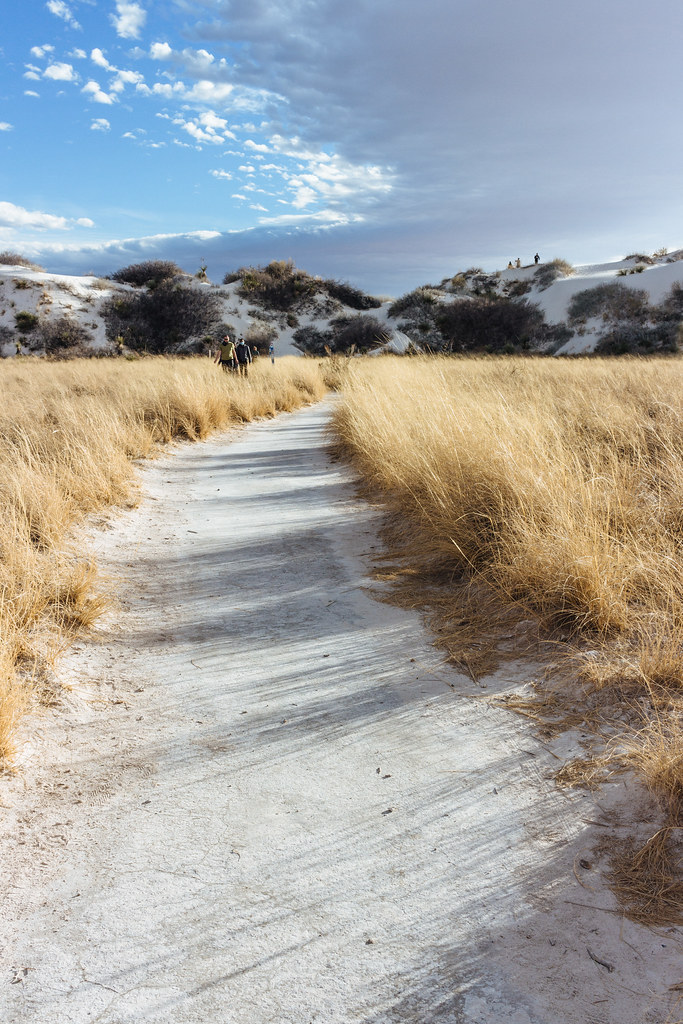 |
| Dune Life Trail |
After scrambling up a short hillside, I entered the dune field for the first time. I couldn’t stop saying “wow!” to myself over and over again; the otherworldly landscape would have been marvelous at any other time, but as I had hardly even left the Sonoran Desert, much less Downtown Phoenix, for nearly two years, it was that much more overwhelming to me.
I marveled at the jaunty, Dr. Seuss-style yucca plants growing out of the sand, whose shadows left abstract patterns in the corrugated sands. Meanwhile, sumac trees floated on “pedestals,” islands of gypsum hardened around roots that secure plants in the shifting dunes.
 |
| Soaptree yucca |
With nothing but my hiking boots to bear me across the sands, I had to be content with sliding down slippery hillsides while others sledded on purpose-made snow saucers waxed for speed.
I took my steps carefully in between the dune crests, as these tiny “interdune” valleys where seasonal creeks can flow were home to cryptobiotic soil crusts. In the deserts of North America, and especially in the ephemeral dune environment, these partnerships of bacteria and fungi create brown, bumpy layers of “hidden life” that bind the soil together, holding onto moisture and fixing nutrients that would otherwise be blown away. The soil crust is fragile—it can take decades, if not centuries, to grow back after a careless footprint—so I made sure the only traces I left were gentle depressions in the sand above.
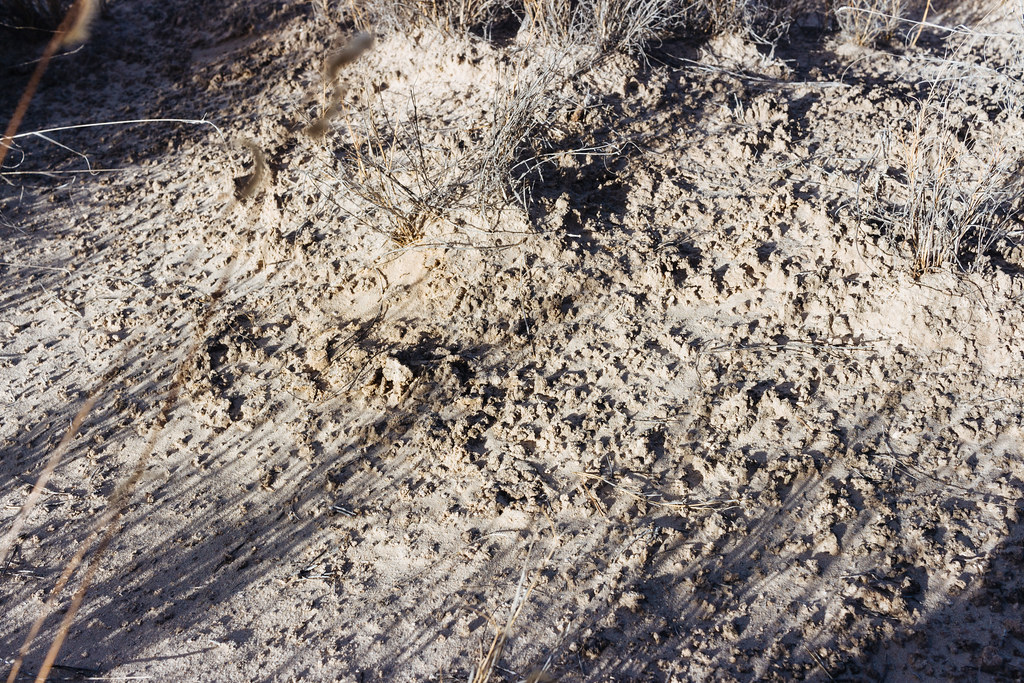 |
| Cryptobiotic soil crust |
There are some footprints worth your attention, however: last year, human footprints were found in the national park that date back 23,000 years ago. Not only are these footprints twice as old as the sand dunes, they doubled (western) archaeologists’ previous assumptions about how long humans have lived in the Americas. Of course, as the article I linked to above reminds us, Indigenous people have always said they have been here from the beginning of time—in fact, they likely witnessed the formation of these very sand dunes as the last ice age was winding down.
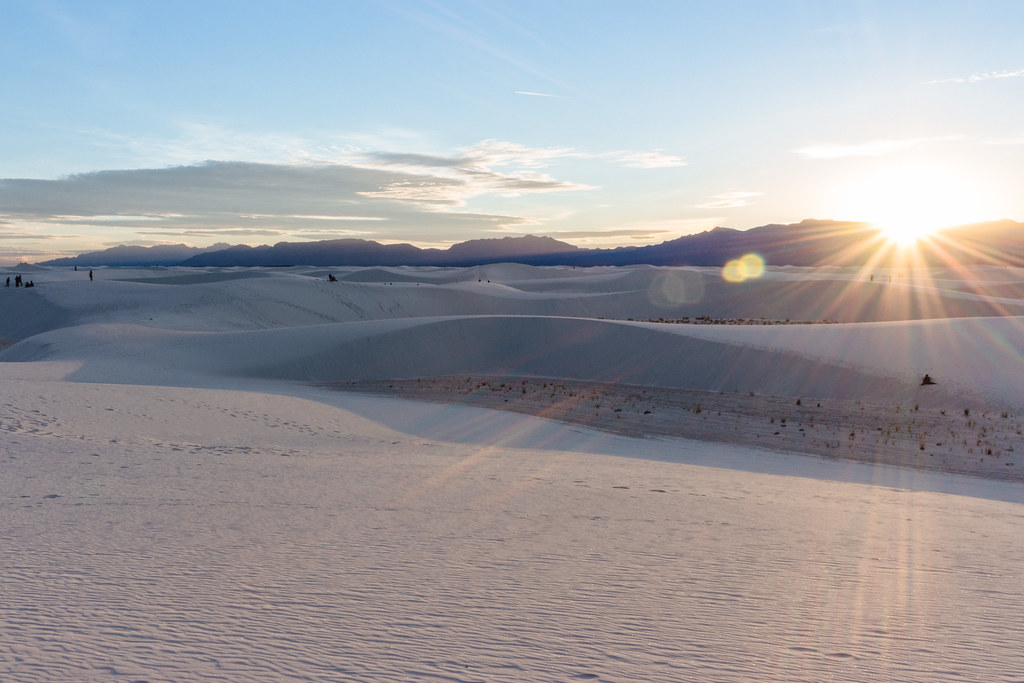 |
| Sunset over the San Andres Mountains |
Just before sunset, I followed the park road deep into the dunes. Informal parking lots on compacted sand budded off the main road next to what felt like snowdrifts. But I continued driving to the very end of the loop near the trailhead for the Alkali Flats, where I clambered up to watch the sun as it passed behind the mountains. Although people filled the dune fields and children screamed while sledding down the sands, I had an entire dune to myself. I took in the near-infinite sea of sand, now a rich palette of pastel pink, purple, and blue, and welcomed the end of a long day of driving.
 |
| Soft-serve after sunset |
How the dunes formed
Here’s a tip: whenever you see sand dunes around the American West, look for mountains. You might find some nearby.
Coral Pink Sand Dunes in far southern Utah, for example, was formed in a pretty straightforward way. High-intensity winds rushed through a notch between two mountain ranges and eroded away the exposed sandstone.
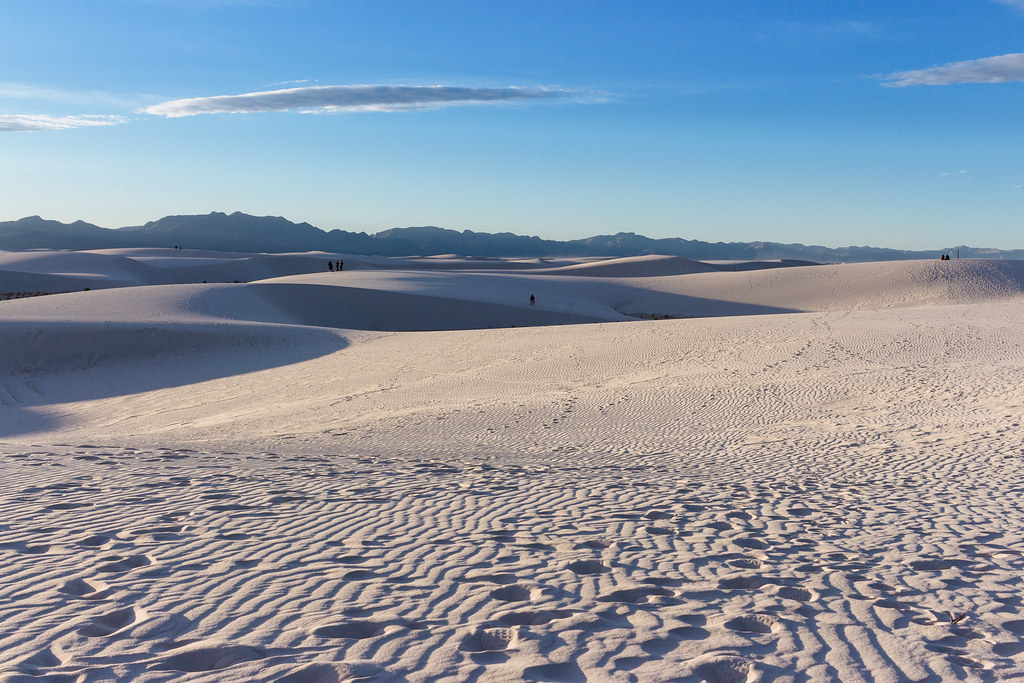 |
| Somewhere on the Alkali Flat “Trail” |
The process at White Sands was a little more complex. Runoff from glaciers, rain, and snow more than 10,000 years ago dissolved minerals in the gypsum-rich San Andres Mountains and carried them down to the desert floor. As water evaporated out of this basin with no outlet to the sea, it left behind large, jagged crystals of selenite. It was these crystals that got eroded away by wind and rain into tiny grains of sand and ultimately gave birth to the sand dunes.
New Mexico’s newest national park
White Sands had been on my to-visit list for years, but at six hours by car from Phoenix, it wasn’t exactly in daytrip territory for me. I wondered when I would ever get the chance to check out this park.
 |
| Sand reflecting shifting wind currents |
In 2019, the U.S. Congress upgraded White Sands National Monument to full National Park status, following the lead of boosters like New Mexico’s Sen. Martin Heinrich, who explicitly wanted to draw more visitors to White Sands and capitalize on the booming outdoor recreation sector. Simply having “Park” in the name induces demand, as people who wouldn’t otherwise feel the need to visit an obscure National Historic Site or remote National Monument—one of more than 400 park service units—will take a second look at a site included in an elite group of just 63 that includes the Grand Canyon, Yellowstone, and Yosemite. Sure enough, 2021 numbers were up almost 30% over 2019.
 |
| An informal parking lot |
So I had my misgivings about contributing to the crowds in our age of overtourism at national parks that has seen entry gates closed at 9:00 a.m. at some parks, timed-entry passes for others, and general mayhem at the busiest parks. (My inner hipster also felt annoyed that I wasn’t able to swing by White Sands before “everyone else” had heard about it.) But because I visited in low season, I at least helped to spread out my impact throughout the year.
The enabling legislation didn’t include any additional funding to support the park’s infrastructure, but park administration was able to raise the cost of admission by five times to the standard national park rate (from $5 a car to $25)—and 80% of entrance fees stay in the park they’re charged at. I hope the increased admission allows the park to mitigate the impacts of higher visitation, from eroded informal parking lots to busy boardwalks and bathrooms.
How to get there
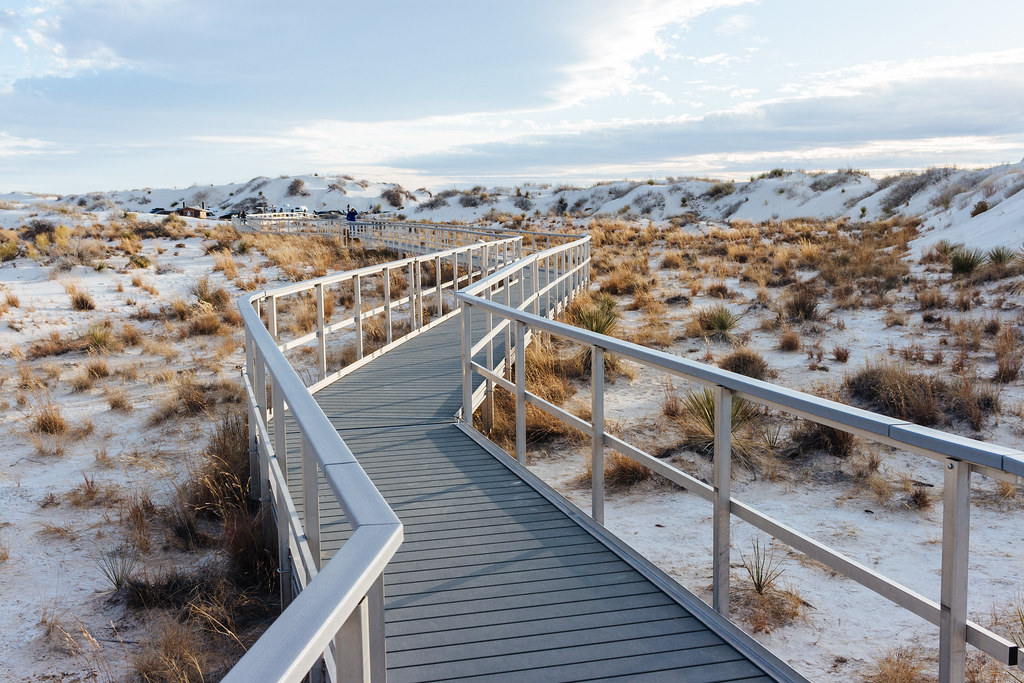 |
| The route to the park is not like this zig zag |
White Sands National Park lies 15 miles southwest of Alamogordo, New Mexico, along U.S. Highway 70. It’s also just 52 miles northeast of Las Cruces, N.M., so it’s an ideal pitstop on a cross-country road trip via Interstates 10 or 25.
Wear a hat, sunglasses, and sunscreen, as I managed to get a sunburn on my face when I arrived at 4:00 p.m. in December! The sand reflects sunlight just like snow on ski slopes does, so plan accordingly.